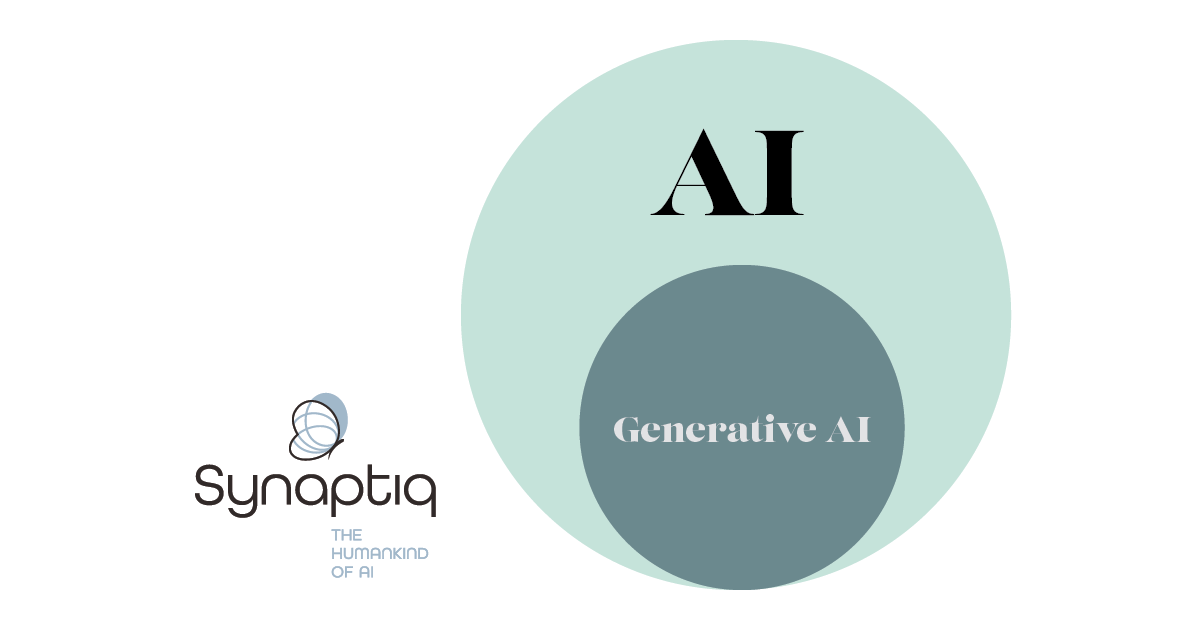The ROI of AI
AI initiatives rarely collapse in obvious ways. There’s no single moment where a model “breaks” or a system stops...
|
DATALAKE
|
 |
|
Synaptiq helps you unify structured and unstructured data into a secure, compliant data lake that powers AI, advanced analytics and real-time decision-making across your business.
|
| Read More ⇢ |
|
AI AGENTS & CHATBOTS
|
 |
|
Synaptiq helps you create AI agents and chatbots that leverage your proprietary data to automate tasks, improve efficiency, and deliver reliable answers within your workflows.
|
| Read More ⇢ |
|
HEALTHCARE
|
 |
|
A startup in digital health trained a risk model to open up a robust, precise, and scalable processing pipeline so providers could move faster, and patients could move with confidence after spinal surgery.
|
| Read the Case Study ⇢ |
|
LEGAL SERVICES
|
 |
|
Learn how Synaptiq helped a law firm cut down on administrative hours during a document migration project.
|
| Read the Case Study ⇢ |
|
GOVERNMENT/LEGAL SERVICES
|
 |
|
Learn how Synaptiq helped a government law firm build an AI product to streamline client experiences.
|
| Read the Case Study ⇢ |
 |
|
Mushrooms, Goats, and Machine Learning: What do they all have in common? You may never know unless you get started exploring the fundamentals of Machine Learning with Dr. Tim Oates, Synaptiq's Chief Data Scientist. You can read and visualize his new book in Python, tinker with inputs, and practice machine learning techniques for free. |
| Start Chapter 1 Now ⇢ |

Generative AI is AI, but not all AI is generative.
We tend to anthropomorphize artificial intelligence as if it were a physical entity. It's common to encounter references to businesses "using" or "adopting" AI — language that suggests an ability to engage with AI as if it were an object, akin to how we "use" a hammer or "adopt" a pet dog.
AI, in reality, is not a tangible thing. It's a collection of algorithms, data, and computational techniques that enable artificial systems (i.e., machines) to perform tasks that we typically associate with human intelligence, such as pattern recognition and problem-solving.
Don’t believe us? Take it from the legendary mathematician and computer scientist John McCarthy, one of the "founding fathers" of artificial intelligence:
“[AI is] The science and engineering of making intelligent machines”
We can conceptualize AI as a field of study, much like mathematics. Businesses can’t “adopt” math itself, but they can incorporate mathematical techniques into their operations. Similarly, businesses can’t “adopt” AI, but they can incorporate AI techniques like machine learning.
If AI is a field of study, then generative AI is a specialized branch of that field. It focuses on the development of artificial systems capable of generating content like text and images. Generative AI applications employ AI techniques to extract patterns from large, complex datasets of human-generated content. They extrapolate upon these learned patterns to create synthetic content that closely resembles what a human might produce.
For example, large language models (LLMs) are a class of generative AI applications that excel in understanding and generating text and code. To put it simply, LLMs like ChatGPT and Bard are trained on sequences of tokens (basic units of text and code), allowing them to generate human-like text and code across a wide range of topics.

Photo by Synaptiq
Synaptiq is an AI and data science consultancy based in Portland, Oregon. We collaborate with our clients to develop human-centered products and solutions. We uphold a strong commitment to ethics and innovation.
Contact us if you have a problem to solve, a process to refine, or a question to ask.
You can learn more about our story through our past projects, blog, or podcast.
AI initiatives rarely collapse in obvious ways. There’s no single moment where a model “breaks” or a system stops...
December 30, 2025
Generative AI systems rarely fail in obvious ways. They don’t crash outright or announce when something has gone wrong....
December 30, 2025
From Code to Capability: A Practical Demo of Agentic AI in Action
In a recent Synaptiq webinar, Dr. Tim...
December 15, 2025